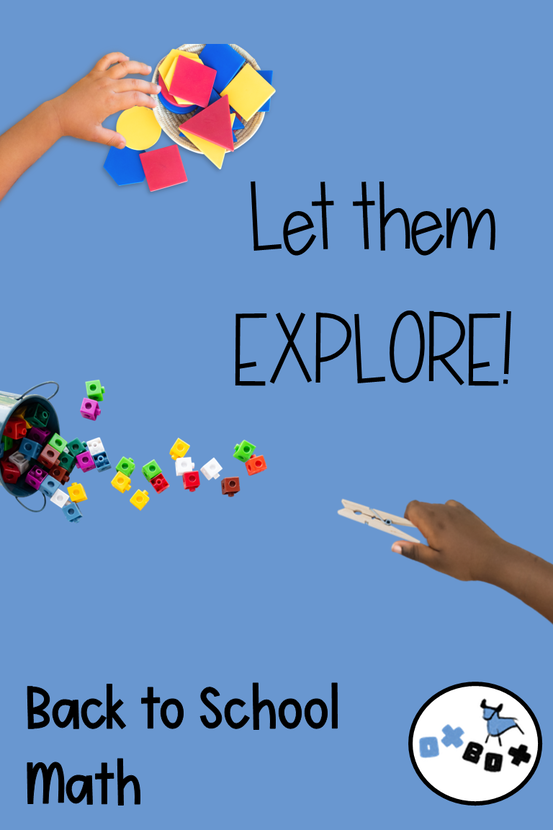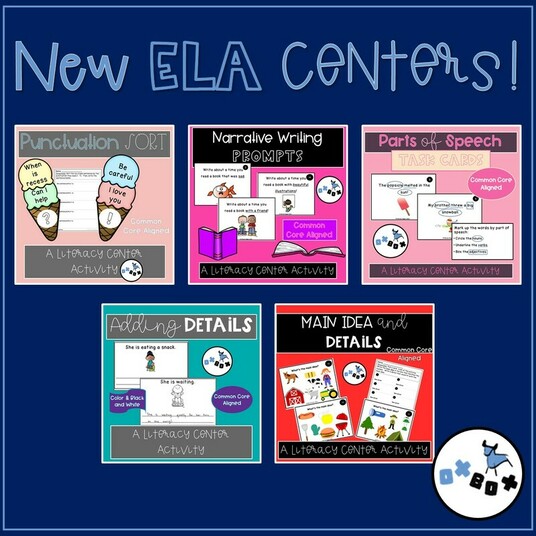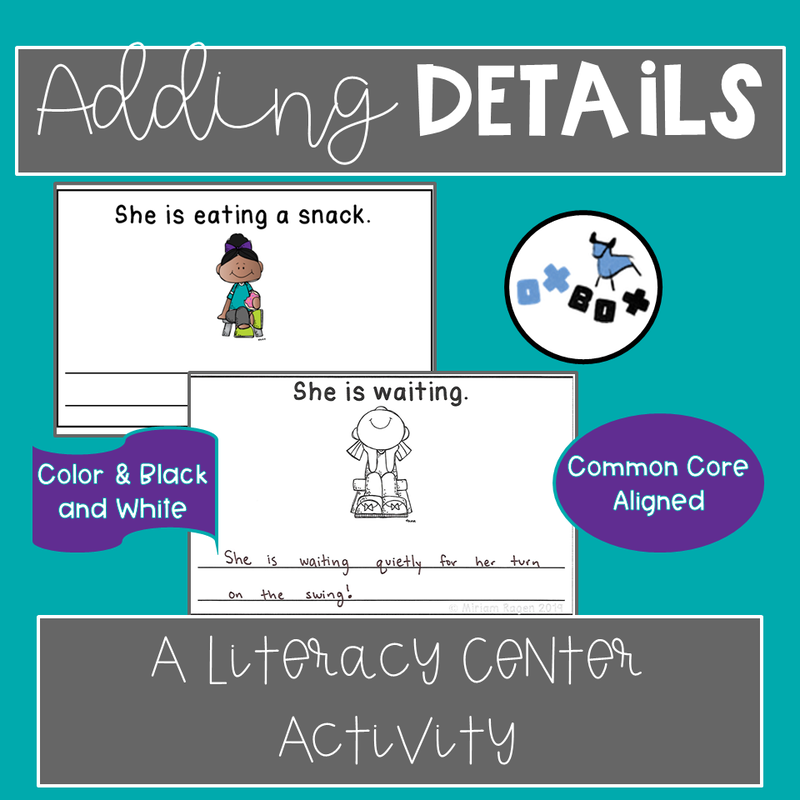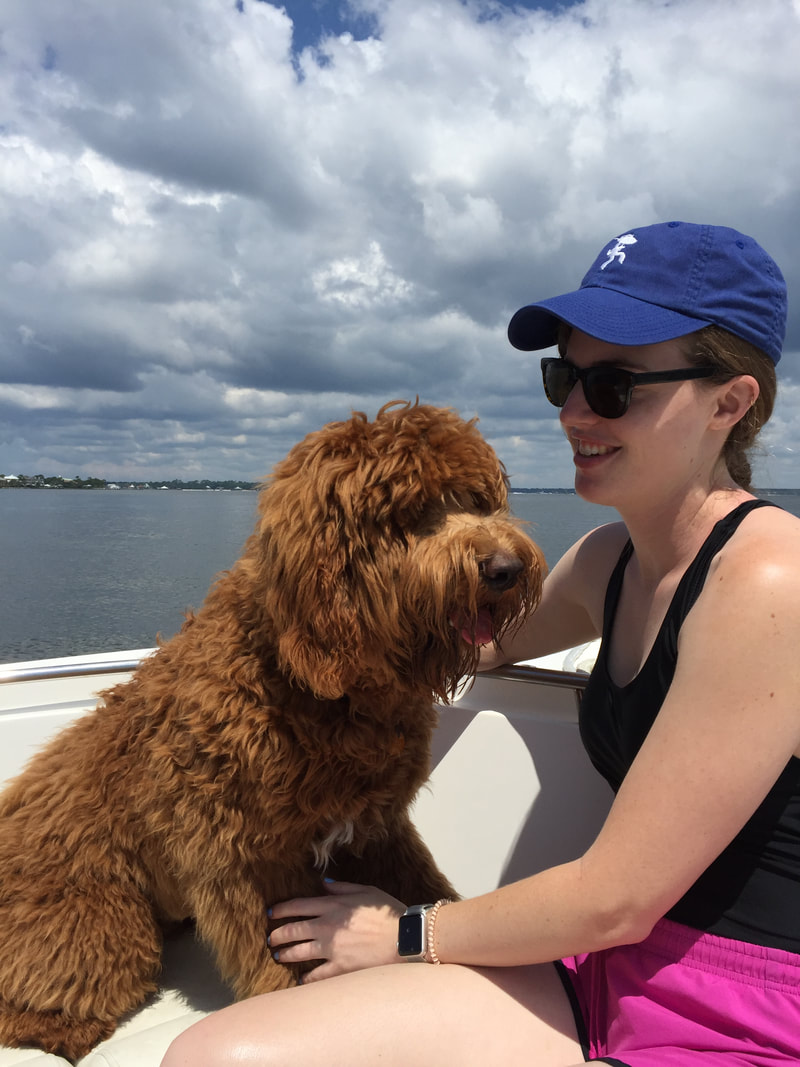|
They always say you spend the beginning of the year setting up routines that will allow your students to thrive throughout the school year. While establishing routines can be daunting it does not have to be! Read on to see how I use simple no prep activities to help my students fall in love with math while mastering our class math routines! Click here to read all about (and get a freebie!) my "no prep" beginning of the year packets for Kindergarten, First Grade, and Second Grade Math! Let them Explore!What kid or adult can resist tinkering with new objects put in front of them? I sure can't! We know that if we want kids to use the manipulatives to solve math problems in a specific way, we first need to give them opportunities for open ended play with the same materials. Students are inherently interested when they see math manipulatives. While an adult might look at a pile of unifix cubes and think they are for counting or learning math concepts, kids see so much more. I have had kids try to build towers taller than a friends, sort the cubes by color, build a "staircase" of rainbow cubes, and so much more! All of this "play" is actually the foundation of many math concepts. By investing a small amount of time into open ended manipulative play you are allowing students to explore so that when they need to complete a concrete task with the manipulatives they can, the novelty has worn off somewhat. Open ended play is also a great opportunity to practice classroom routines like cleaning up, answering to a call and response, moving around the room. It also allows for practice of social emotional skills like sharing and problem solving! Moving On to Paper and Pencil TasksWhile kids can learn so much from manipulatives the reality is they also need to be able to complete paper and pencil tasks. However, these don't have to be boring worksheets filled with endless equations. I like to start the year with beginning of the year themed worksheets that are accessible to most students. I find that by giving them math worksheets that they can successfully complete I am building up their math confidence! This plays dividends as harder concepts are introduced throughout the year.
I like to use math centers or rotations so I can pull small groups. As my students become more comfortable with math manipulatives I start dividing the class-- some completing paper and pencil tasks and some exploring manipulatives. This allows kids to keep practicing their independence and the classroom routines and leaves me to float around helping anyone who needs it! I rotate activities so every student gets to experience both sides. Eventually, I will add a third group- one working with me! At this point the paper and pencil group and math manipulatives group are working independently. This allows me to start on the formal math curriculum, knowing that my students have mastered the routine. Throughout the year the manipulative and paper and pencil tasks get more complex but the structure stays the same! Check out my seasonal math worksheets here! Read more of my tips for center organization here! Check out how I use digital math centers for virtual and in person learning! Click here for my Eureka Math centers!
3 Comments
I love using literacy activities and centers in the pre-k, kindergarten, first grade, and second grade classroom. I think they increase engagement and support social-emotional learning. I use them to compliment direct instruction and give students more hands-on practice with content. I structure my centers to match the scope and sequence of our ELA curriculum. This year we are using the Wit and Wisdom curriculum for our literacy block. Wit and Wisdom is Common Core aligned and tells teachers which standards will be targeted during each Module. I take this scope and sequence and create literacy centers that practice the same Common Core standards but in a different way. The centers are not linked to the Wit and Wisdom curriculum but do match the standards progression. I am very excited about the new centers I made to go with First Grade Wit and Wisdom Module 1! Each center is Common Core aligned and can be completed by students independently. Read about each center below. Click on each picture to see it in my TPT store! Narrative Writing Prompts: The different task cards challenge students to think of a time they read a book that meets certain criteria- a book you read outside, a non-fiction book, etc. (Common Core Standard: W.1.3) Adding Details: Students read sentences that match the picture on the card. They then improve the sentence by adding adjectives, verbs, or other details. (Common Core Standards: W.1.5) Punctuation Sort: I love sort centers! They are very engaging! Students read sentences and decide if they need a period, question mark, or exclamation point. Students then write their own sentences for the punctuation marks (Common Core Standards: L.K.2, L.1.2, and L.2.2). Parts of Speech Task Cards: Students mark up the sentences on the task cards using the given code- circle the nouns, underline verbs, and box adjectives. Students then write the words they found under the correct part of speech on the recording sheet. (Common Core Standards: L.K.1, L.1.1, L.2.1). Vocabulary Clip Card Activity: Students use the context to determine what the underlined vocabulary word means. Students clip or mark the definition for the underlined word. They then pick a vocabulary word and fill out the recording sheet- writing and illustrating a sentence with the vocabulary word. You can have this center for FREE!!! Just fill in the form down below! Center organization can be challenging. Read about how I try to keep pieces from getting mixed up or lost! Read about other ways I supplement Wit and Wisdom in my classroom! Even as an adult I find playing with playdough very satisfying. You can make anything and the squish is fun no matter what age you are! But playing with playdough is not just fun, it has some great benefits! It helps to strengthen fine motor skills and the muscles used for writing. We don't usually think about our hand muscles but they are essential to writing, drawing, cutting, etc. Playdough is one way to strengthen those muscles and help children build stamina they need to be successful. I love using playdough for academic centers-- making letters, numbers, sight words, etc. But, I decided to use playdough to liven up my writing center and incorporate some social-emotional learning! Playdough Faces asks students to make a face using playdough. They can be as creative and detailed as they want. It can look like a human face or a silly face. There is even a chart of emotion ideas to help push them past "happy" and "sad." There are optional writing pages where students can either describe the face they made or write a story about the character they created. This ties in those Common Core writing standards in a fun way! Click on the picture to see it in my store! Fill out the form below to get my Playdough ABC for free! I LOVE centers! I think they are a great way for kids to learn academic and social skills while also having fun. I do not love organizing centers. I really do not like finding center pieces around the classroom and not knowing where they go. Despite talks with students and modeling center expectations, center pieces will get lost! They are kids. They are busy learning. They will make mistakes and pieces will get lost. That is okay!!!! Here is how I set up my center organization to be easy on teachers but effective in the classroom. I print out and laminate many centers for all parts of my day. I like to make multiple versions of each center so that different students can work on it at the same time. In my class students can complete centers at a table, laying on the ground, in a pocket chart, under a table... I don't like to limit them too much which can mean more scattered center pieces. COLOR CODING CENTER PIECES IS THE SECRET! After I print my pages but before I laminate them I color code the centers. This takes approximately 2 seconds. I grab the closest coloring implement (crayon, pen, pencil, highlighter, whatever was left by the copy machine) and scribble on the back of my centers. Each set of a center is one color. The scribbles aren't beautiful, they just need to have a little bit of the color on the back of each piece. I then laminate, cut out the pieces, and put the center in my classroom! Now when I find that random piece on the floor I simply need to flip it over and see what color it has. I then find the container with the rest of the pieces and reunite them! This is so simple that students can take ownership. It can even be a classroom job. I had tried numbering the back of my pieces before but that takes more time and if a student is not fluent with number recognition they cannot take the same ownership in the problem solving process as they can with color coding. It also works well to print different copies on different colors of cardstock. However, this can make the copying process more difficult, and let's be real sometimes you don't have colored cardstock available. Enter your info below to get a FREE center! Try out the color coding and let me know if it works! |
AuthorMiriam taught kindergarten and first grade for 10+ years. Archives
July 2022
Categories
All
|























 RSS Feed
RSS Feed